 Website:
RIGEL Medical
Website:
RIGEL Medical
Group: Seaward Group
Catalog excerpts

Passionate about patient safety.
Open the catalog to page 1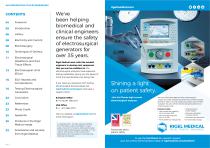
Electrosurgical Waveforms and their Tissue Effects Electrosurgical Units (ESUs) Testing Electrosurgical Generators Photo Credit Products in the Rigel Medical range Accessories and services from Rigel Medical Passionate about patient safety. We’ve been helping biomedical and clinical engineers ensure the safety of electrosurgical generators for over 35 years. Rigel Medical work with like-minded engineers to develop test equipment that you can be confident in. Our electrosurgical analyzers have expansive testing capabilities, giving you the peace of mind that specifications are being met. If...
Open the catalog to page 2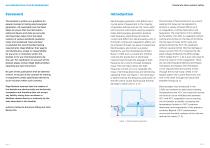
Passionate about patient safety. This booklet is written as a guideline for people involved in testing electrosurgical generators. All reasonable care has been taken to ensure that the information, reference figures and data are accurate and have been taken from the latest versions of various standards, guidance notes and recognised “best practises” to establish the recommended testing requirements. Rigel Medical, their agents and distributors, accept no responsibility for any error or omissions within this booklet or for any misinterpretations by the user. For clarification on any part of...
Open the catalog to page 3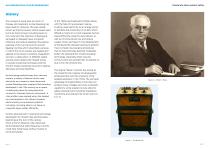
Passionate about patient safety. History The concept of using heat as a form of therapy and treatment to stop bleeding has been used for centuries. This was initially known as thermal cautery where tissues were burnt by thermal heat, including steam or hot metal with the intention of destroying damaged or diseased tissue to prevent infections and reduce bleeding. The earliest example of this can be found in ancient Egyptian writing which described a process in which the tip of a probe was heated and applied to the tissue to produce coagulation, necrosis, or desiccation. In 3000 BC, battle...
Open the catalog to page 4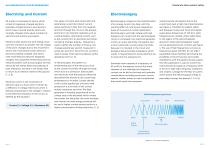
Passionate about patient safety. Electricity and Current All matter is composed of atoms, which consist of negatively charged electrons, positively charged protons, and neutrons which have a neutral polarity. Atoms are neutrally charged when equal numbers of electrons and protons are present. Electrons orbit atoms and with energy move out from one atom to another. The net charge of the atom changes due to this movement; atoms with more protons than electrons become positively charged, and atoms with more electrons become negatively charged. Two properties of electricity that can influence...
Open the catalog to page 5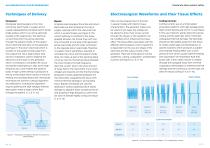
Passionate about patient safety. Techniques of Delivery Monopolar Monopolar electrosurgery is the most commonly used mode in surgery and is usually represented by the Bovie pencil (small single probe), which is an active electrode located at the surgical site. The electrical current flows from the active electrode through the patient’s body, to the patient return electrode and back to the generator, see Figure 5. The return electrode which is located on the patient’s body away from the surgical site, has a large surface area and low impedance used to disperse the electrical current back to...
Open the catalog to page 6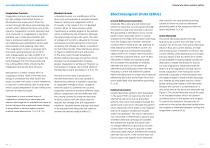
Passionate about patient safety. AN INTRODUCTION TO ELECTROSURGERY Coagulation Currents Coagulation currents are characterised by high voltage intermittent bursts of dampened sine waves which drive the current through the tissue and relatively low current which reduces the duty cycle to 6%, Figure 6. Coagulation currents typically have a CF of around 10. Coagulation is electrical sparking over a wide area therefore less heat is produced resulting in evaporation and relatively slow dehydration which seals blood vessels while keeping cells intact. “The coagulation current is operated with the...
Open the catalog to page 7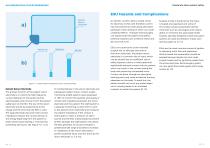
Passionate about patient safety. ESU Hazards and Complications Patient Return Electrode Figure 7 – a) Patient Return (Dispersive) and b) Active Electrodes Patient Return Electrode The primary function of the patient return electrode is to collect the high frequency current delivered to the patient during electrosurgery and remove it from the patient safely back to the ESU. The size of the return electrode should be proportional to the energy and the time that the ESU is used. The large electrode area and small contact impedance reduces the current density of the energy dispersing from the...
Open the catalog to page 8
Passionate about patient safety. Testing Electrosurgical Generators Electrosurgery is the principle of inducing heat by high frequency electrical current for coagulation, cutting, desiccation and fulguration of biological tissue developed by Bovie. The correct operation of electrosurgical generators is essential to ensure patient safety and manage the risks associated with the use of high and low frequency electrical current on the human body. Manufacturers of electrosurgical generators must follow the strict design criteria of IEC 60601-2-2, which stipulates the specific requirements in...
Open the catalog to page 9
Passionate about patient safety. To carry out the CQM test using the Rigel Uni-Therm, connect a CQM test lead between the patient plate connector and the front panel of the Rigel Uni-Therm, see Figure 10. Figure 11 – Rotary encoder on the Rigel Uni-Therm Auto Mode CQM Test ALARM LIMIT OHMS AUTO DOWN Figure 10 – Connecting Rigel Uni-Therm to the CQM circuit Unlike conventional analyzers, the Rigel Uni-Therm utilises a motor driven potentiometer which can simulate resistance variations to within 1Ω resolution. This allows the user to trigger the CQM system by simulating fault conditions...
Open the catalog to page 10
Passionate about patient safety. AN INTRODUCTION TO ELECTROSURGERY Power Management The Uni-Therm provides a variety of options during the power measurement and has the ability to measure currents of up to 8 Ampere RMS. The unique internal load bank is designed to minimise the phase shift, which can lead to inaccurate measurements at high frequencies and is typical of traditional electrosurgical analyzers, see Figure 15. The large colour display provides a clear and detailed interpretation of output power whilst cut and coag foot paddle control automates the process; making this a fast,...
Open the catalog to page 11All RIGEL Medical catalogs and technical brochures
-
SafeTest 60
3 Pages
-
CITREX H3
1 Pages
-
SafeTest 99
3 Pages
-
FlowAnalyser PRO
4 Pages
-
CITREX H5
2 Pages
-
Guide to Infusion Pump Testing
19 Pages
-
IEC 62353
29 Pages
-
IEC 60601
18 Pages
-
Global Brochure
17 Pages
-
CITREX
6 Pages
-
PRODUCT RANGE 2018
12 Pages
-
Med-eBase
2 Pages
-
PRODUCT RANGE 2017
12 Pages
-
UniPulse 400
2 Pages
-
Printers and Scanners
6 Pages
-
Rigel 62353+
5 Pages
-
VenTest 800 Series
8 Pages
-
Rigel 288+
5 Pages
-
PULS-R
2 Pages
Archived catalogs
-
PatSim200
2 Pages
-
Rigel Multi-Flo Datasheet
6 Pages
-
Uni-Pulse
6 Pages
-
M e d - e B a s e v 2 . 0
3 Pages
-
RIGEL
20 Pages
-
SP-SIM SpO2 Simulator
5 Pages
-
BP-SiM NIBP Simulator
5 Pages
-
Rigel Medical Brochure - USA
20 Pages
-
Rigel Medical Brochure UK
20 Pages


































